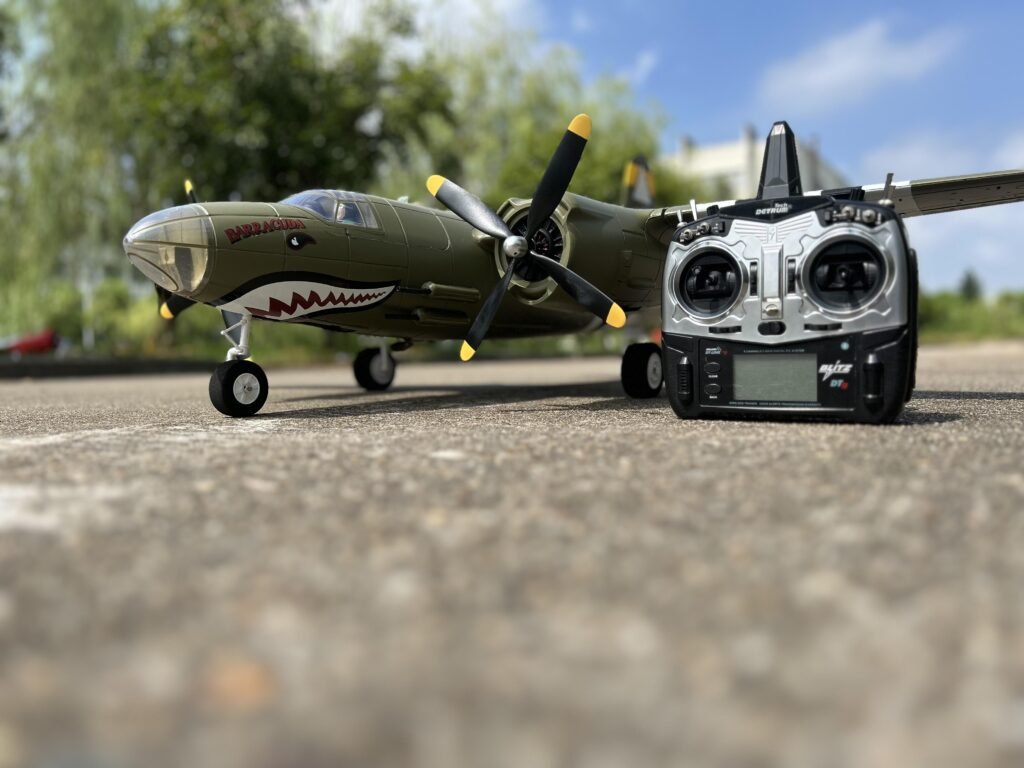When it comes to flying RC planes, the transmitter is one of the most critical components. A reliable and feature-packed transmitter can significantly enhance your flying experience, offering better control, precision, and ease of use. In this guide, we’ll explore the key features and considerations to help you choose the best RC plane transmitter for your needs.
Channels: The More, The Better?
The number of channels is one of the first things to consider when selecting a transmitter. Each channel controls a different function on your RC plane, such as throttle, rudder, ailerons, and elevator. A basic 4-channel transmitter will be enough for most beginners, but more advanced pilots might want 6 or more channels to control additional features like retractable landing gear or flaps. Think ahead about what types of planes you’ll fly and if you’ll need extra functionality in the future.
Frequency and Range: Why 2.4GHz is Standard
Modern RC transmitters typically operate on the 2.4GHz frequency. This frequency offers many benefits, including a longer range, less interference, and automatic frequency hopping to prevent signal issues. Most RC pilots prefer 2.4 ghz radio receiver for its reliability and convenience, making it the standard for most transmitters. Always ensure your transmitter operates on this frequency, especially if you plan to fly in crowded areas or RC clubs where signal overlap can occur.
Mode Selection: Mode 1 vs. Mode 2
Transmitter modes determine how the control sticks are assigned to specific flight functions. Mode 2 is the most common setup in the US, with the left stick controlling throttle and rudder, and the right stick controlling elevator and ailerons. Mode 1, more popular in Europe, switches these assignments. Make sure to choose the mode that feels most comfortable to you, or the one that matches the transmitter you are already accustomed to.
Programmability and Model Memory
For pilots who own multiple RC planes, having a programmable transmitter with model memory can save a lot of time and effort. These transmitters allow you to store settings for different planes, so you don’t have to manually adjust settings each time you switch models. Some high-end transmitters can store configurations for dozens of aircraft, making them an excellent choice for experienced hobbyists with a diverse fleet.
Ergonomics and Build Quality
Comfort is another important factor, especially if you fly for extended periods. Look for a transmitter that feels sturdy in your hands with well-placed controls. The weight should be balanced, and the sticks should move smoothly without too much resistance. Some transmitters come with adjustable stick tension, allowing you to customize the feel to your liking. Don’t overlook this aspect—an uncomfortable transmitter can make flying less enjoyable and affect your performance.
Battery Life: Fly Longer, Charge Less
Long battery life is crucial, especially for those who like to spend a lot of time flying. Most modern transmitters use rechargeable LiPo batteries, which can provide several hours of operation on a single charge. Make sure to check the battery life specifications and consider investing in a transmitter with a low-battery warning system to avoid losing power mid-flight.
Telemetry Capabilities
Telemetry allows real-time data from the plane (such as battery voltage, altitude, or GPS location) to be transmitted back to the pilot. Having access to this data can provide important insights into the status of your RC plane and can even help prevent crashes by alerting you when the battery is running low or when the plane is out of range. If you’re flying expensive or complex models, having telemetry is a game-changer.
Conclusion: Choose a Transmitter That Fits Your Needs
Selecting the right RC plane transmitter depends on your experience level, the complexity of your aircraft, and your personal preferences. Beginners may want to start with a simple 4-channel transmitter, while more advanced pilots may benefit from extra channels, programmable features, and telemetry capabilities. Don’t forget to prioritize comfort and battery life, as these can greatly affect your overall flying experience. With the right transmitter, you’ll enjoy more precise control and a smoother, more enjoyable flight.
By keeping these factors in mind, you’ll be able to choose a transmitter that not only suits your current needs but can also grow with you as you advance in the RC hobby.



More Stories
Top 5 Things to do at Dubai Parks and Resorts
Top 5 Things to do at Dubai Parks and Resorts
Explorarea Impactului Economic al Producției de Tutun în Europa de Est